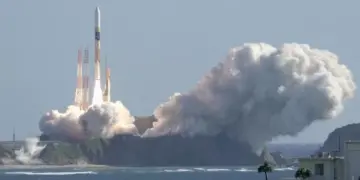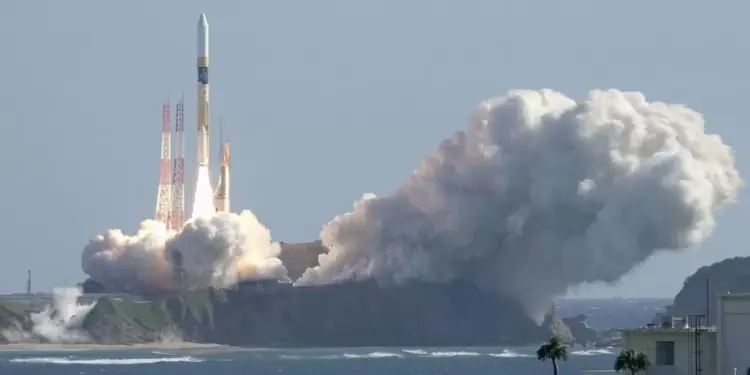By John Ikani
Japan achieved a successful rocket launch on Thursday, marking its fourth attempt this year to reach the Moon’s surface. The goal is to join the elite group of lunar landers, which currently includes the United States, Russia, China, and India.
Japan encountered two previous lunar landing failures within the past year, with its latest mission being postponed three times in August due to adverse weather conditions. Just two weeks ago, India made history with a successful Moon landing near the southern polar region.
The lunar lander, affectionately dubbed the “moon sniper,” took flight on the H-IIA rocket, courtesy of the Japan Aerospace Exploration Agency (JAXA). If all proceeds as planned, the lander will touch down within 100 meters (328 feet) of its targeted site near the Shioli crater on the Moon’s near side. Previous missions often experienced landings several to dozens of kilometers away from their intended locations.
Over the next four months, the spacecraft is set to enter the Moon’s orbit, circling it for about a month before making its landing attempt in February. This $100 million (£59 million) endeavor aims to showcase Tokyo’s capacity to execute a cost-effective landing with a lightweight spacecraft on the lunar surface.
Accompanying the lunar lander was the X-Ray Imaging and Spectroscopy Mission (XRISM) satellite, a collaborative effort involving Japanese, American, and European space agencies. This satellite, equipped with a telescope comparable in size to a bus, will eventually part ways with the lunar lander and commence investigations into celestial phenomena like black holes once it orbits Earth.
Notably, JAXA faced a communication loss with its OMOTENASHI spacecraft last November, leading to the abandonment of a Moon landing mission. In April, a private Japanese start-up, iSpace, experienced a similar setback when it lost contact with its Hakuto-R lander, preventing a successful landing.
Japan’s space program has encountered additional challenges this year, including two unsuccessful test rocket launches, with the most recent failure in July attributed to engine malfunction.


































